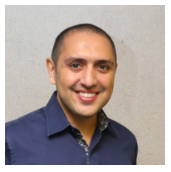
When people think of Human Resources, they do not often consider design thinking principles. However, Monir Azzouzi, Chief People Experience Officer at GoToko, wants HR leaders to connect design thinking with both talent management and business objectives. Aligning these goals requires a creative approach to HR.
Azzouzi will share these tips and ideas with the audience at HR and Future of Work APAC in March 2023. It’s free to join this online event, and you can register now. In the meantime, here’s an interview that provides a sneak peek of the session:
WATCH: HR and Future of Work APAC
HREN: What is design thinking? What are design thinking principles and how do they relate to HR? Why should an HR professional be interested?
MA: Everything we do today is human centric. The question is, “How do you create a conducive environment that fosters growth in the organization, innovation, and so forth?” Design thinking might not be the only tool but it is a tool that worked well for me to support retention. What do you need to do to create something that the people want instead of what I think I they want?
So, it’s a little bit like customer experience that has been in the center of sales and marketing for many years now. Nobody questions the fact that customer experience is something on which we need to focus. I see it the same way for people. If you want to attract the best people, if you want to get the most out of people and ensure they are as engaged as possible, you need to think about people experience. When I’m talking about people experience, I’m not just talking about events and having fun. I’m talking about how do we design the processes? How do we design policies? How do we make sure that people grow in the way that they want, and so forth?
HREN: How can design thinking help with human resources?
MA: It really depends on what industry you’re in. A friend of mine was telling me, ‘Oh, man, we are looking for so many people. We can’t attract people and blah, blah, blah.’ I said, ‘That doesn’t sound familiar at all to me because I’m in a startup in an industry that is laying off thousands of people all over the world, right? So, we don’t have the same challenges. It really depends on what kind of challenges you’re having.
If the problem is attrition, for example, I would go in and identify the issue and work with the employees. I’ll typically take the most critical problem and run a design thinking workshop, where they talk about what issues they’re facing, they come up with solutions, and they feel they own the solution that we’re presenting and implementing.
If the problem is that processes are too bureaucratic or old school or whatever you want to call it, you must go in and find out [the problem]. Okay, where is the issue? Instead of asking HR because we are used to doing it the same way over and over again, go in and find out where you can improve things. Again, by doing it with the employees, you get different solutions.
One last thing I want to add is that at GoToko, I’m the board director, and I’m heading HR and facilities. We’ve put HR and facilities or workplace experiences under one umbrella under me, which means I own the process from A to Zed. At so many companies, you have two different leaders trying to come up with solutions, discussing it, and often have different ways of thinking. But the way we do it is everything is under one umbrella. When we create those journeys for people, we take everything into consideration.
Often, you see HR people complaining about IT and facilities. Why can’t they do things properly? IT is saying exactly the same about HR. Why don’t they understand our world? Why don’t they do it the right way? By putting it under one umbrella, all the complaints end up at my desk, so I better solve it. I have to come up with holistic solutions.
We worked together. Using design thinking to come up with the best solutions resulted in very fast implementation. We did a survey among all our employees, and we had a positive score of 90%.
HREN: What kind of advice would you like to share with our audience?
MA: If you’re talking about corporates who are still undergoing the digitalization journey, I would say, ‘Whatever you do, don’t get stuck with the old ways of doing things and trying to force feed the digital tools to match your old processes.’ You have a unique chance to create processes and policies that can enable and actually drive the business toward this goal by changing the old ways of doing things, because digital is about making things more efficient. Otherwise, you shouldn’t do it at all.
Make sure that whatever you do, you have the business in your mind as the first priority. What is the approach that we need to take to enable and drive the strategy that the business wants to achieve? Then, once you have that in mind, how do you design processes, policies, workflows, whatever you do to enable that strategy? Then, you implement whatever you want to implement. If you need to shake up everything you’ve done in the past, do it. It’s a fun journey. I’ve been through it three times now, and it’s a great experience.
Don’t miss your chance to learn about design principles at Azzouzi’s session or any of the other innovative discussions that will be sparked at HR and Future of Work APAC in March. Register now. It’s free.

